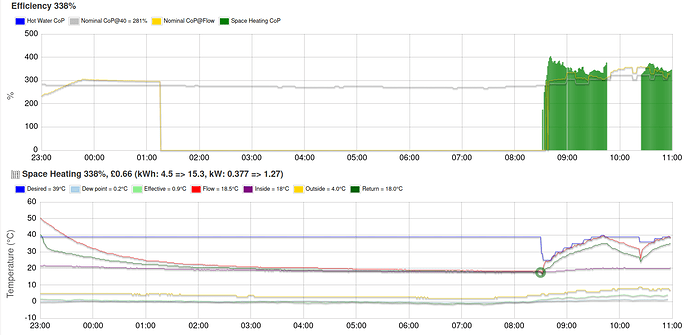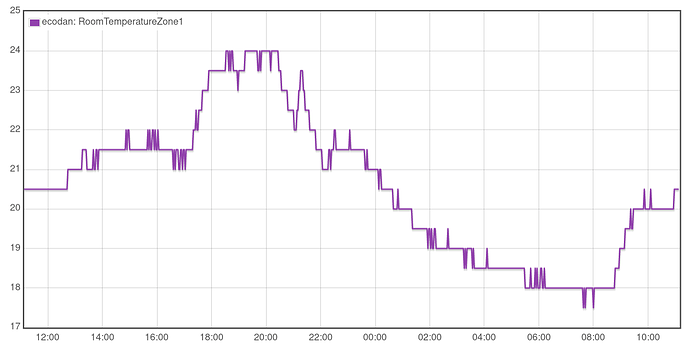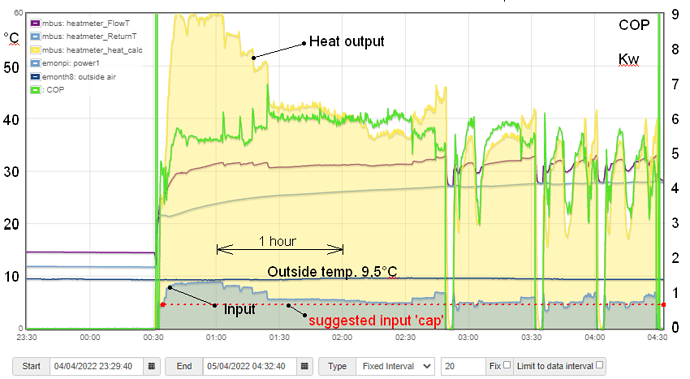I’ve since refined my formula into something simpler, while still being rooted in some science I made up:
DeltaTemp × HeatLoss ÷ HeatGain + DesiredTemp
DeltaTemp= difference between outside temperature and the desired indoor temperature (°K)HeatLoss= how many watts of heat are lost per degree of delta temperature - 450 for me (W/°K)HeatGain= total output of all heating emitters per degree of flow temp - mine is 333 (W/°K)DesiredTemp= the desired target temperature for the whole house (°C)
To explain how this works: deltaTemp × HeatLoss will be the total watts of heat escaping the house. Dividing these watts by HeatGain gives how many degrees hotter the radiators need to be. Add the desiredTemp to get the ideal flow temperature for the given outside temperature.
The HeatGain can be calculated from the total wattage from all the emitters, divided by the dT (i.e. 50). Or, take the “Peak Heat Load” from the heating system design spec, divided by the design temperature which is typically -3° outside vs. 21° inside (i.e. 24°).
What’s nice about this is that I can configure the set-back temperature to be the 2° lower overnight, which reduces the flow temperatures by about 5°.
I’ve taken the opposite approach, which is to set the TRVs to be relatively high and use the weather comp to keep the temperature balanced. I additionally boost the flow temp if the house is too cold, and suppress it if it’s too warm. I also aim to have all the rooms at the same temperature as many of them are in use throughout the day, and inmates keep leaving doors open anyway, so trying to “micro-zone” just isn’t working out for me. {Heat Geek have a good video about this}







